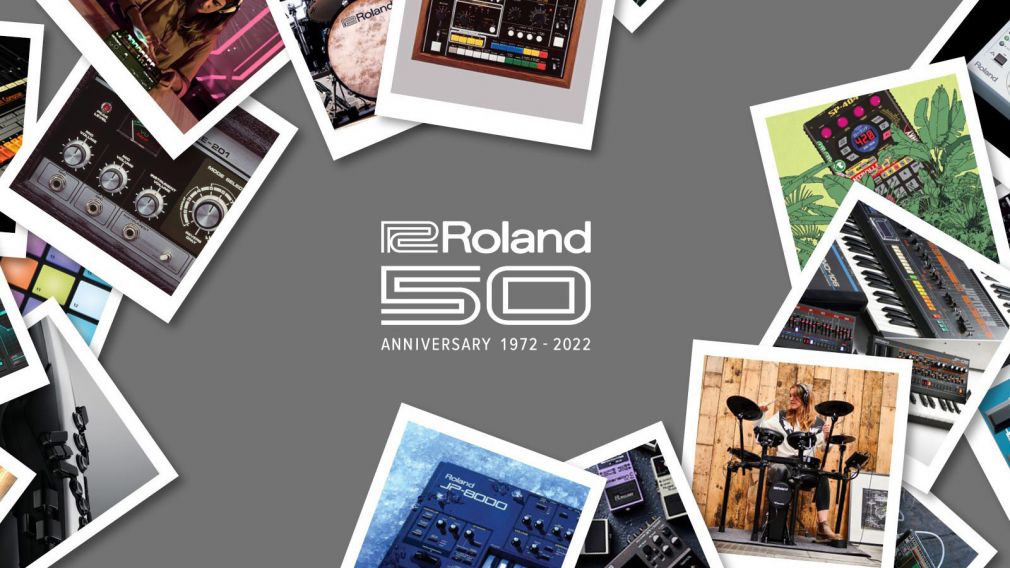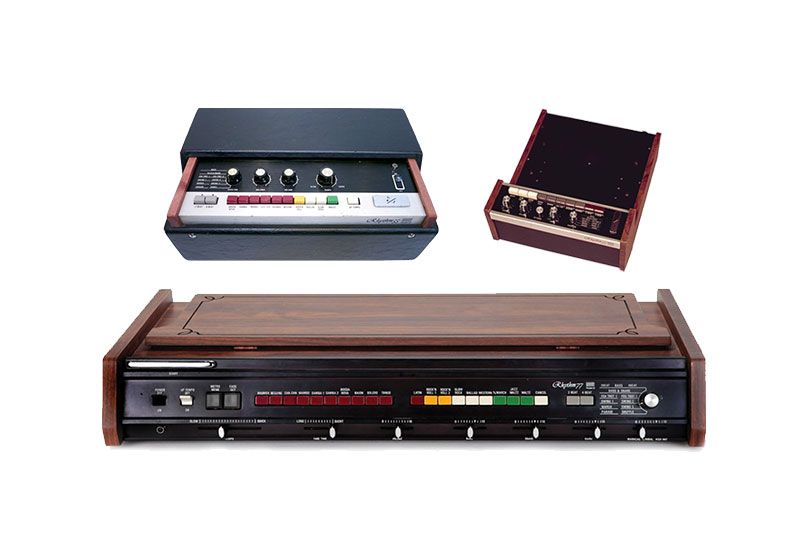Roland Celebrates 50 Years

Mr. Ikutaro Kakehashi started the Roland Corporation on April 18, 1972. Ever the experienced businessman, Mr. Kakehashi saw an opportunity to reach amateur musicians and hobbyists.
The electronic musical instrument and software manufacturer began in Osaka, Japan, with just seven employees working out of a rented shed. Despite these humble beginnings, Mr. Kakehashi was able to tap into his experience at Ace to introduce Roland’s first product, a drum machine, the TR-77 or Rhythm 77. That same year the TR-33 and TR55 were released. By 1972 Roland debuted its first synthesizer, the SH-1000, and its first non-preset synthesizer, the SH-3.

Perhaps even more unique than this rapid launch of products is the story behind the Roland name. Mr. Kakehashi wanted to appeal to global markets, so he wanted an easy-to-pronounce name, regardless of language. While hunting for a name that fit this specification, “Roland” was discovered in a telephone directory, and he was satisfied with the easy-to-pronounce two-syllable word. The icing on the cake for the manufacturer was that not many other companies in the industry whose name started with an “R,” and therefore Roland would stand out in trade show directories and industry listings.
Roland didn’t limit itself to the drum machine and synthesizer market in the 1970s. By 1974, the NAMM Member was producing effects pedals like the RE-201 Space Echo, a product found in recordings like Radiohead’s “Subterranean Homesick Alien” and King Tubby’s “555 Dub Street.”
The following year Roland expanded into guitar amplifiers with the JC-60 and JC-120 Jazz Chorus. The chorus circuit inside these amps led to the establishment of the first Boss Corporation product, the CE-1 Chorus Ensemble. Roland closed out the 1970s with the introduction of the earliest microprocessor-driven music sequencers, the MC-8 MicroComposer and the CR-78 Compurhythm, electronic instruments that laid the foundation for the iconic TR-808.
The 1980s brought about the innovation of the TR-808, a drum machine that is still celebrated today thanks, according to Roland, “to forward-thinking producers and enthusiastic club-goers.” The TR-808 is a cross-genre staple in sound that even has its name regularly mentioned in song lyrics like Missy Elliot’s “Boomin,” Kesha’s “Your Love is My Drug," and Sir-Mix-A-Lot’s “Posse on Broadway.”
When the TR-808 was released, it wasn't as big of a success as its legacy may indicate. Records indicate that one review even dismissed the 808 as sounding like "marching anteaters." Despite its criticism, there were supporters of the 808. Contemporary Keyboard magazine predicted it would become "the standard for rhythm drum machines of the future."
Despite falling out of favor quickly and being discontinued in 1983, the TR-808 appears on more hit records than any other drum machine. Listeners can experience the TR-808 on iconic tracks like “In the Air Tonight” by Phil Collins, “Sexual Healing” by Marvin Gaye, “I Can’t Go For That” by Hall and Oates, and “I Wanna Dance With Somebody” by Whitney Houston, among countless others.
Innovation continued throughout the 1980s, and before the close of the decade, Roland and Mr. Kakehashi cemented their place as icons in the industry by developing MIDI. He proposed the development of a standardized means of synchronizing electronic musical instruments manufactured by different companies. Pitching the idea first to Oberheim Electronics, Sequential Circuits, Yamaha, Korg, and Kawai, Mr. Kakehashi worked closely with Dave Smith of Dave Smith Instruments, later known as Sequential Circuits to launch MIDI. MIDI was first announced by Dr. Robert Moog in a 1982 edition of Keyboard magazine and made its first debut at The 1983 NAMM Show. Smith demonstrated a MIDI connection on a Korg Prophet 600 and Roland JP-6 synthesizers, and by August of that year, the team published the MIDI specification. In 2013, Smith and Mr. Kakehashi were recognized with a Technical Grammy Award. The MIDI standardization still acts as the industry-standard almost 40 years later, with the latest iteration, MIDI 2.0, debuting at The 2020 NAMM Show.
NAMM is honored to have companies like Roland included in its membership. For half a century, Roland has transformed the music products industry and immeasurably influenced popular music through its innovations.
For more information on Roland, please visit www.roland.com.